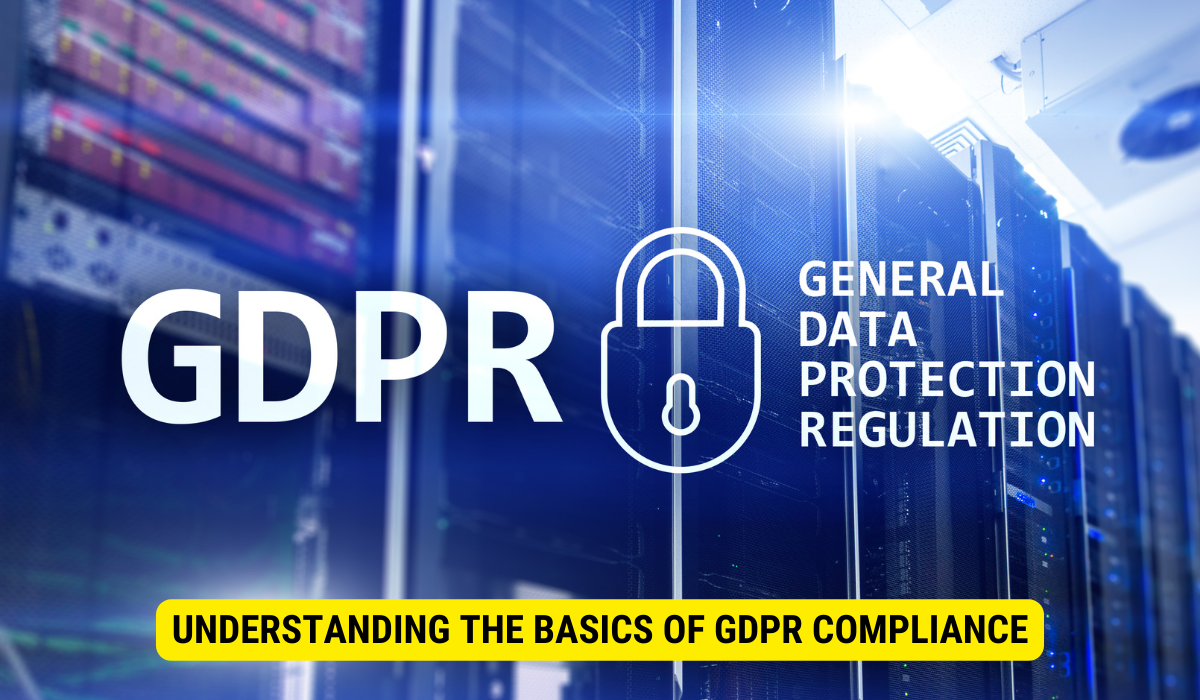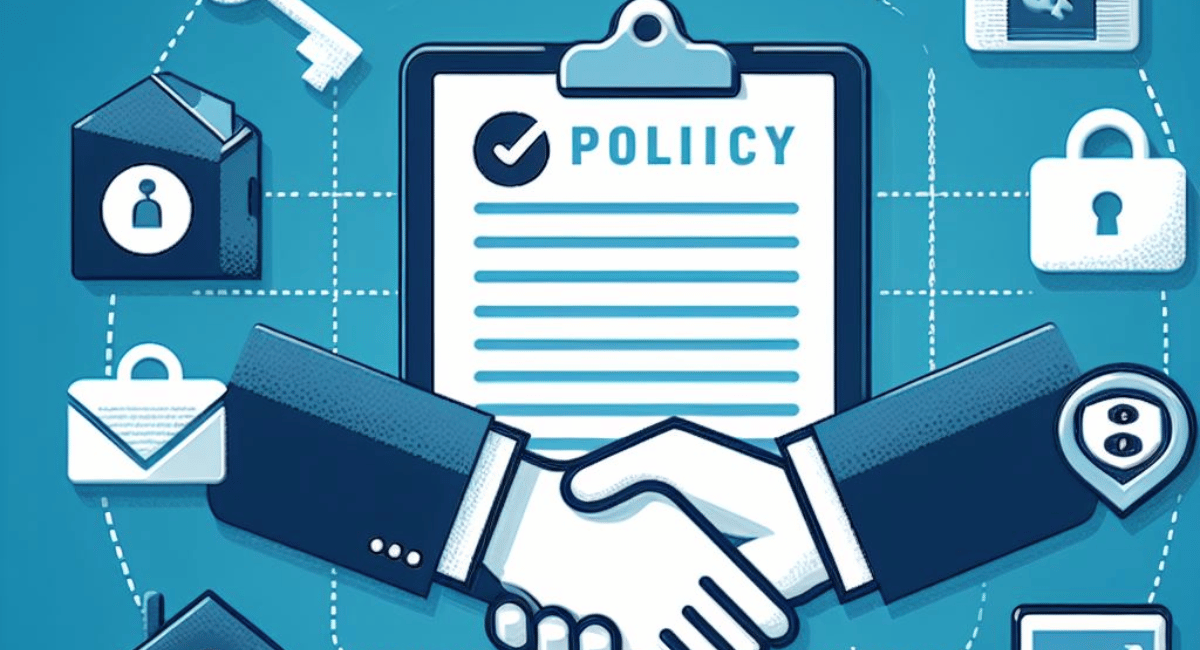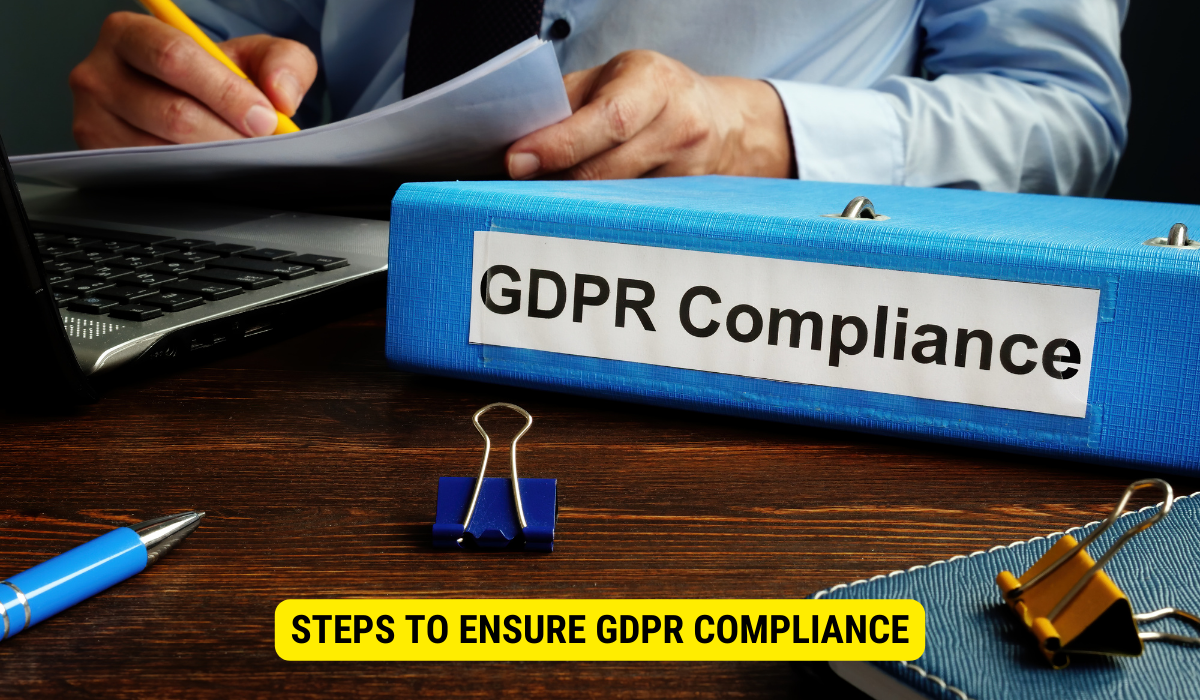Yes, to be GDPR compliant, you can and should add a link to your privacy policy at data collection points, ensuring transparency and allowing individuals to understand how their data will be used.
In the contemporary digital landscape, ensuring data privacy has become of primary importance. Following the introduction of the General Data Protection Regulation (GDPR), businesses and entities must align with its mandates. A fundamental component of GDPR adherence is having a privacy policy and embedding a reference to it wherever data is amassed. I will explore the foundational elements of GDPR adherence and the relevance of privacy statements. Moreover, I will highlight the importance of pointing to privacy terms during data gathering, non-adherence repercussions, and measures organizations can adopt for full GDPR alignment.
Understanding the Basics of GDPR Compliance
Before delving into the intricacies of privacy guidelines and data acquisition, understanding the foundational elements of GDPR compliance is vital. The General Data Protection Regulation, or GDPR, is a mandate introduced by the European Union to protect the personal information of individuals and grant them authority over its utilization. It’s relevant for any entity that processes the personal details of EU citizens, irrespective of its geographical presence.
The GDPR isn’t merely a collection of guidelines; it signifies a transformative approach to how firms manage personal details. The regulation accentuates clarity, responsibility, and the rights of individuals. By acquainting themselves with the core principles of GDPR, entities can take informed actions to safeguard personal information and adhere to the established norms.
What is GDPR?
The GDPR, which took effect on May 25, 2018, introduced a comprehensive set of data protection rules. Its main objective is to enhance individuals’ rights by providing transparency, accountability, and control over their data.
Within the GDPR framework, individuals possess the right to be informed about the personal data gathered concerning them, its utilization, and its recipients. Additionally, they can access their personal information, ask for amendments or removals, and contest its processing for specific reasons.
Non-adherence to the GDPR can result in substantial penalties and harm an organization’s reputation. As such, entities need to grasp the core tenets of the GDPR and put in place the necessary protocols to uphold its standards.
Key Principles of GDPR
GDPR is centered around several key principles that organizations must adhere to:
- Data Minimization: Collect only the necessary data required for specific purposes.
- Lawfulness, Fairness, and Transparency: Process personal data lawfully, fairly, and transparently.
- Purpose Limitation: Limit the processing of personal data to its intended purpose.
- Accuracy: Ensure that personal data is accurate and up to date.
- Storage Limitation: Retain personal data for no longer than necessary.
- Integrity and Confidentiality: Implement appropriate security measures to protect personal data.
These principles guide organizations to ensure they handle personal data responsibly and ethically. By following these principles, organizations can build trust with individuals and demonstrate their commitment to protecting personal data.
For example, data minimization is an essential principle that encourages organizations only to collect the data they need for specific purposes. This means that organizations should avoid collecting excessive or unnecessary data that could be misused or compromised. Organizations can minimize the risk of data breaches and unauthorized access by collecting only the necessary data.
Another important principle is accuracy. Organizations must ensure that the personal data they hold is accurate and up to date. This means regularly reviewing and updating personal data to reflect changes or corrections. By maintaining accurate data, organizations can provide individuals with reliable information and prevent any potential harm from inaccurate data.
Furthermore, the principle of integrity and confidentiality requires organizations to implement appropriate security measures to protect personal data. This includes encryption, access controls, and regular security audits. By safeguarding personal data, organizations can prevent unauthorized access and uphold the privacy and confidentiality of individuals’ information.
In essence, the core tenets of GDPR offer a blueprint for entities to confirm that they manage personal data responsibly and adhere to regulations. By grasping and enacting these tenets, organizations can showcase their dedication to safeguarding data and fostering confidence among individuals.
The Importance of Privacy Policy in GDPR Compliance
A privacy policy is a legal document that outlines how an organization handles personal data. It establishes transparency and builds trust with individuals whose information is collected. In the context of GDPR compliance, a well-crafted privacy policy is essential.
Regarding privacy and data protection, individuals are becoming increasingly concerned about how their personal information is used. Organizations must be more transparent about their data processing practices when implementing the General Data Protection Regulation (GDPR). This is where a privacy policy plays a crucial role.
Role of Privacy Policy in Data Protection

A privacy policy is a communication channel between the organization and individuals collecting data. It defines how personal data is gathered, processed, stored, and protected. By clearly outlining these practices, organizations demonstrate their commitment to protecting individuals’ privacy rights.
Moreover, a well-crafted privacy policy helps individuals make informed decisions about sharing their personal information. It gives them a clear understanding of how their data will be used and the confidence to engage with organizations prioritizing data protection.
Essential Elements of a GDPR-Compliant Privacy Policy
To adhere to GDPR standards, a privacy policy must meet certain criteria the regulation outlines. These elements may include:
- Information about the organization collecting the data
- Purposes for which data is being collected
- Legal basis for data processing
- Data retention period
- Rights of individuals regarding their data
- Third-party data disclosure
- Security measures implemented
Providing detailed information about the organization collecting the data helps individuals understand who they are sharing their personal information with. It builds trust and allows individuals to make an informed decision about whether or not to provide their data.
The privacy policy should clearly state the purposes for which data is being collected. This ensures that individuals know how their data will be used and prevents potential misuse or unauthorized processing.
Under the GDPR, organizations must have a legal basis for processing personal data. This can include obtaining consent from individuals, fulfilling a contract, complying with a legal obligation, protecting vital interests, performing a task in the public interest, or pursuing legitimate interests.
It is also important for the privacy policy to specify the data retention period. This informs individuals how long their data will be stored and helps them understand the organization’s data management practices.
The rights of individuals regarding their data, such as the right to access, rectify, erase, restrict processing, and object to processing, should be clearly outlined in the privacy policy. This empowers individuals to exercise their rights and control their personal information.
Furthermore, the privacy policy should address the disclosure of personal data to third parties. Individuals have the right to know if their data will be shared with any external entities and for what purposes.
Lastly, a GDPR-compliant privacy policy should detail the security measures implemented by the organization to protect personal data. This includes encryption, access controls, regular security audits, and employee training.
In conclusion, a well-crafted privacy policy is essential for GDPR compliance. It ensures transparency, builds trust with individuals, and helps organizations demonstrate their commitment to protecting personal data. By addressing the essential elements mandated by the GDPR, organizations can establish a strong data protection and privacy foundation.
Linking Privacy Policy at Data Collection Points
One effective approach to achieve GDPR compliance is to include a link to the privacy policy at data collection points. This proactive measure ensures that individuals have easy access to the privacy policy and information on how their data will be handled.
Why Link Privacy Policy at Data Collection Points?
Including a privacy policy link at data, collection points promotes transparency and enables individuals to make informed decisions. It allows them to understand the purpose of data collection and review the policy before consenting.
How to Effectively Link Your Privacy Policy
When linking a privacy policy, it is crucial to make it easily accessible and visible. Some methods to consider include:
- Hyperlinking the policy text directly at data collection points.
- Using a clear and concise statement alongside a hyperlink.
- Providing a pop-up with the complete privacy policy text.
Consequences of Non-Compliance to GDPR
Non-compliance with GDPR can have severe consequences for organizations. Understanding the legal implications and potential financial penalties associated with non-compliance is vital.
Legal Implications of GDPR Non-Compliance
Failure to comply with GDPR can result in legal actions, including investigations and fines. Supervisory authorities can conduct audits, issue warnings, and suspend data processing activities.
Financial Penalties for Non-Compliance
GDPR empowers supervisory authorities to impose significant fines on non-compliant organizations. Based on the extent of the infringement, penalties can amount to either 4% of the firm’s yearly global revenue or €20 million, whichever sum is greater.
Steps to Ensure GDPR Compliance
To ensure GDPR compliance, organizations should follow steps addressing data protection and privacy measures.
Conducting a Data Audit
A thorough data audit helps organizations understand what personal data they hold, where it is stored, how it is processed, and the legal basis for its processing. This audit clarifies data-related risks and helps identify areas that need improvement.
Implementing Data Protection Measures
Organizations need to adopt suitable technological and procedural strategies to safeguard individual data. This encompasses employing encryption, managing access rights, conducting frequent data backups, and educating employees about optimal methods for data security. Regular Review and Update of Privacy Policies
Privacy policies should be periodically reviewed and updated to reflect changes in data processing practices, legal requirements, or organizational procedures. Regular review ensures the policy remains accurate and aligned with GDPR’s principles and guidelines.
Key Takeaways
- GDPR Significance: GDPR was implemented to safeguard EU residents’ data and grant them extensive rights over their data.
- Privacy Policy Role: A privacy policy acts as a communication tool, defining how personal data is collected, processed, and protected.
- Linking Benefits: Adding a privacy policy link at data collection points ensures individuals have immediate access to how their data will be handled, promoting transparency and trust.
- Potential Consequences: Non-compliance with GDPR can result in severe financial penalties and reputational damage for organizations.
- Steps for Compliance: Undertaking data audits, ensuring proper data protection measures, and updating privacy policies are crucial for GDPR compliance.
FAQs
What is the GDPR?
The General Data Protection Regulation is a regulation by the European Union to protect individuals’ data and give them control over its use.
Why is it essential to link the privacy policy at data collection points?
Linking the privacy policy at data collection points promotes transparency and enables individuals to make informed decisions before consent.
What key principles underlie the GDPR?
GDPR is centered around data minimization, transparency, purpose limitation, accuracy, storage limitation, and data integrity and confidentiality.
What are the consequences of non-compliance with the GDPR?
Organizations can face legal actions, including investigations and fines of up to 4% of the company’s annual global turnover or €20 million, whichever is higher.
How can organizations ensure GDPR compliance?
Organizations can ensure compliance by conducting data audits, implementing data protection measures, and regularly reviewing and updating their privacy policies.
Conclusion
In conclusion, Ensuring GDPR compliance is paramount in the digital age. Organizations foster transparency by linking the privacy policy at data collection points, empowering individuals to understand and consent to data practices. With potential stringent repercussions for non-compliance, organizations must prioritize GDPR guidelines, enhancing data protection and fortifying user trust.
